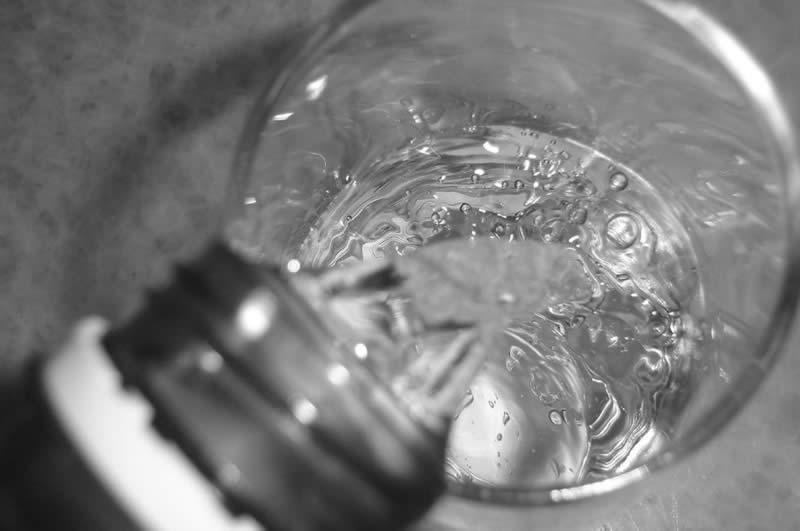




Park Forest, IL-(ENEWSPF)- The Village of Park Forest enacted a village-wide boil order after monthly routine sampling tested positive for two types of bacteria: E. coli and total coliform. Both Jason Miller, Director of Communications, and David Vavrek, Chief Water Plant Operator, responded to inquiries from eNews Park Forest.
According to Mr. Miller, testing of the water yielded positive results for E. coli and total coliform.
Mr. Vavrek said the Village was doing monthly routine sampling. “We collected nine samples on Tuesday. Late Wednesday the lab notified me that ONE of the nine samples was bad bacterialogically, the remaining 8 throughout the Village were fine.”
Thursday morning, July 4, Mr. Vavrek collected again from the location that had a positive result and also collected two additional samples, one five houses upstream and the other five houses downstream.
“I was notified today that the two [houses] up/downstream were fine but the one from our sample point was still bad.”
According to Mr. Vavrek Saturday morning, “The first sample was bad and we collected the second for confirmation. The second showed NO E. coli and trace amounts of total coliform. The third was collected yesterday [Friday] and we are awaiting those results.”
Mr. Vavrek said at that point he informed the IEPA which instructed him to put the village under a boil order. According to Mr. Vavrek, it is under his purview to issue a boil advisory, but the IEPA actually issues boil orders.
“We are collecting samples between today and tomorrow to make sure everything is fine,” Mr. Vavrek said.
Mr. Vavrek added Saturday morning, “The IEPA state inspector has us taking 30 samples for the boil order (Friday and Saturday) and downstate IEPA has me resampling the site that failed again along with the up/down streams gain for safety (same thing Friday and Saturday). The two consecutive samplings ensures everything is safe.”
“I won’t have any results if those samples until late this evening. The samples that will be taking today will not be ready until late tomorrow,” Mr. Vavrek said.
However, since only the IEPA can issue a boil order, only the IEPA can lift a boil order. Mr. Miller said that, while test results will be sent to the IEPA immediately, it will likely be Monday morning at the earliest that the IEPA will lift the boil order.
Mr. Miller said, with the holiday and the weekend, the boil order will likely remain in effect for 48 to 72 hours as the IEPA must confirm the results of all tests the Village does over the weekend.
Less well known, perhaps, than E. coli, total coliforms are actually more than one type of bacteria, “bacteria that are found in the soil, in water that has been influenced by surface water, and in human or animal waste,” according to the New York State Department of Health.
A water sample is unsafe, present or total coliform positive if coliform bacteria are found in the sample. Generally coliforms are bacteria that are not harmful and are naturally present in the environment. They are used as an indicator that other, potentially harmful, fecal bacteria (indicated by the E. coli species) could be present. If any routine or repeat sample is total coliform positive, the system (i.e., the lab) must further analyze that sample to determine if E. coli are present. The presence of coliform bacteria in tap water suggests that there could be a problem with existing equipment or treatment systems, contamination of the source water or a breach in the distribution system that could introduce E. coli contamination.
The Centers for Disease Control and Prevention says boiling “is the surest method to kill disease-causing organisms, including viruses, bacteria, and parasites.”
According to the CDC:
“If you don’t have safe bottled water, you should boil your water to make it safe to drink. Boiling is the surest method to kill disease-causing organisms, including viruses, bacteria, and parasites.
“You can improve the flat taste of boiled water by pouring it from one container to another and then allowing it to stand for a few hours, OR by adding a pinch of salt for each quart or liter of boiled water.
“If the water is cloudy:
- Filter it through a clean cloth, paper towel, or coffee filter OR allow it to settle.
- Draw off the clear water.
- Bring the clear water to a rolling boil for 1 minute (at elevations above 6,500 feet, boil for three minutes).
- Let the boiled water cool.
- Store the boiled water in clean sanitized containers with tight covers.
“If the water is clear:
- Bring the clear water to a rolling boil for 1 minute (at elevations above 6,500 feet, boil for three minutes).
- Let the boiled water cool.
- Store the boiled water in clean sanitized containers with tight covers.”
Correction: An earlier version of this article said that a second test showed positive for both E. coli and total coliform but a third, later on, showed only trace amounts of total coliform. Mr. Vavrek clarified Saturday morning, “The first sample was bad and we collected the second for confirmation. The second showed NO E. coli and trace amounts of total coliform. The third was collected yesterday [Friday] and we are awaiting those results.”
Related: Making Water Safe in an Emergency (CDC)








